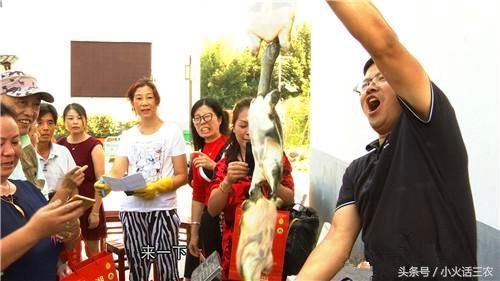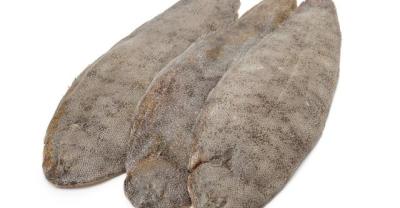Pond culture technology of double-crop shrimp, cultivation of Macrobrachium rosenbergii and freshwater shrimp in different crops
Cultivate early propagation shrimp seedlings in plastic greenhouse, culture Macrobrachium rosenbergii from May to mid-August, Macrobrachium rosenbergii from mid-August to October, or Macrobrachium rosenbergii from June to September, and another season of green shrimp from October to May of the following year. In this way, the economic benefit of shrimp culture in pond can be greatly improved.
Shrimp culture: the benefit of mixed culture of Macrobrachium rosenbergii and Penaeus vannamei is good.
1. Build aquaculture pond
It is required that the aquaculture pond has an area of 8-10 mu, a slope ratio of 1 ∶ 2.5, good water quality, abundant water sources and a water depth of more than 2 meters. The newly dug aquaculture pond should open a shrimp gathering ditch 4-6 meters wide in the middle of the bottom for centralized fishing. The high irrigation and low discharge technology is adopted to build the intake and drainage system.
Culture of Macrobrachium rosenbergii in shrimp ponds
2. Seedling cultivation
To raise Macrobrachium rosenbergii for two seasons, a plastic greenhouse should be built ahead of time. Early propagation shrimp seedlings were purchased for intensive cultivation from late March to early April, and the specification of shrimp seedlings in mid-late May will reach 3 cm. In mid-late May, Macrobrachium rosenbergii was purchased for cultivation in a special pond, and the specification of shrimp seedlings could reach 3 cm around the middle of August for release in the later season. Such as breeding Macrobrachium rosenbergii in the previous season and breeding green shrimp in the later season. Buy Macrobrachium rosenbergii seedlings for release in mid-late May, purchase green shrimp seedlings in early June, select breeding ponds, set up a number of small cages, and release green shrimp with eggs. At the end of September, the specifications of shrimp seedlings can reach about 3 cm.
Raising Shrimp: secret to improve the Survival rate of Green Shrimp Seedling out of the Pond
3. Rational stocking
Macrobrachium rosenbergii was cultured for two seasons, with 0.8-10 million shrimp per mu in the previous season and 1-12000 per mu in the later season. The previous season raised Macrobrachium rosenbergii later season green shrimp, Macrobrachium rosenbergii stocked 2-25000 larvae per mu, or cultivated shrimp 1-15000, and Macrobrachium rosenbergii 15-20 000 per mu. Clean and disinfect shrimp ponds, cultivate basic bait, transplant aquatic plants and so on before stocking. Choose sunny morning stocking, pay attention to the temperature difference is not too large.
Green shrimp culture
4. Feed feeding
Two shrimps can be fed with a series of compound feeds of Macrobrachium rosenbergii and green shrimp respectively. Raise Macrobrachium rosenbergii, mainly to feed clams, snails, clam meat, supplemented with formula feed, can also be a series of formula feed, properly increase the feeding of shrimp and small fish. Usually, the protein content of the feed fed in the juvenile shrimp stage is more than 35%, and that in the adult shrimp stage is more than 32%. The daily feed amount of Macrobrachium rosenbergii is 5% Macrobrachium rosenbergii and 3% Macrobrachium rosenbergii in the pond. It is mainly fed in the evening, which accounts for about 70% of the whole day. The feed is put in the deep water area during the day and in the shallow water area in the evening, so as to achieve regular, quantitative, qualitative and fixed-point feeding.
Yubao EM Raw liquid, Aquatic Special bacteria, Fertilizer and Water microbial preparation, RMB 200 modified EM bacteria like to buy / /
Improvement of water quality by microbial EM bacteria in shrimp ponds 5. Water quality management
From May to June, the pond should be kept at a depth of 0.8 meters at the initial stage of stocking, and the pond should be filled with water in the high temperature season from July to September. In autumn, when it is cloudy and rainy and muggy, fresh water should be injected every 7-10 days. At ordinary times, it is necessary to strengthen water quality testing and pond patrol.
Culture of Macrobrachium rosenbergii in ponds 6. Timely fishing
Cultivation of two seasons of Macrobrachium rosenbergii, starting in early August in the previous season and early October in the second season; breeding one season of Macrobrachium rosenbergii and one season of Macrobrachium rosenbergii, Macrobrachium rosenbergii began to catch large and stay small in mid-August and listed in batches, and green shrimp began to be caught and listed in May of the following year. If there are conditions, we can also adopt the method of temporary culture in a plastic greenhouse and retain some commercial shrimp to be sold when prices rise before and after the Spring Festival.
Friends who are interested in aquaculture can pay attention to it. There are wonderful aquaculture information and technical articles to share every day. Email address: [email protected].
- Prev

"San Nong Qi Tan" A master of soft-shelled turtle farming teaches you how to raise wild soft-shelled turtle by open-air culture
His soft-shelled turtle is so fierce that he won't let go once he bites it. The ferocious soft-shelled turtle is not easy to catch, attracting many tourists to jump into the quagmire. Five years ago, how to sell soft-shelled turtle to him.
- Next

Does raising sika deer make money? Qiao Filiang earns 400000 a year in raising sika deer.
On February 20, Qiao Filiang of Hengyuan Street Office in Linyi County raised sika deer with the tenacity of never giving up, from the beginning to now 400 sika deer.
Related
- On the eggshell is a badge full of pride. British Poultry Egg Market and Consumer observation
- British study: 72% of Britons are willing to buy native eggs raised by insects
- Guidelines for friendly egg production revised the increase of space in chicken sheds can not be forced to change feathers and lay eggs.
- Risk of delay in customs clearance Australia suspends lobster exports to China
- Pig semen-the Vector of virus Transmission (4)
- Pig semen-the Vector of virus Transmission (3)
- Five common causes of difficult control of classical swine fever in clinic and their countermeasures
- Foot-and-mouth disease is the most effective way to prevent it!
- PED is the number one killer of piglets and has to be guarded against in autumn and winter.
- What is "yellow fat pig"? Have you ever heard the pig collector talk about "yellow fat pig"?

